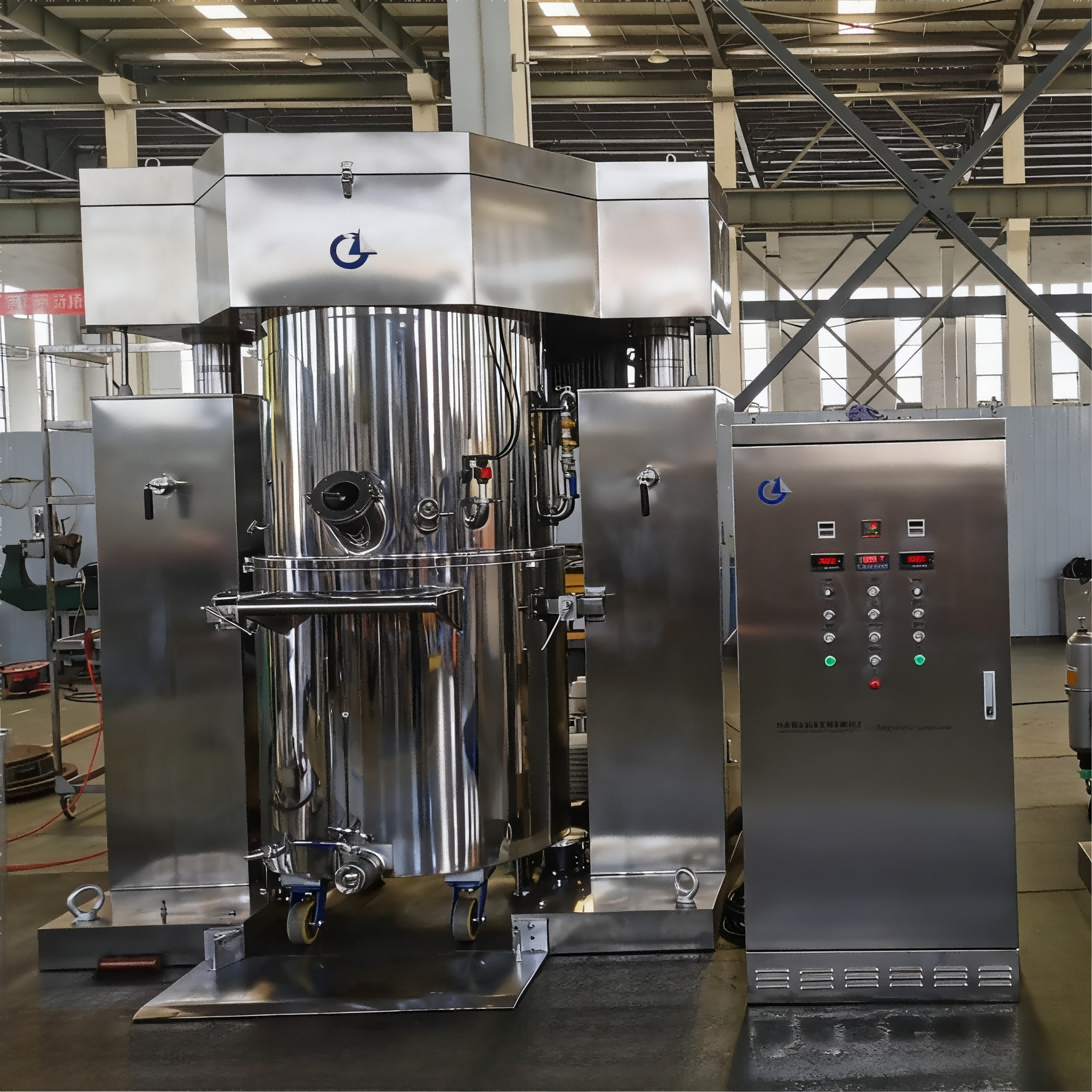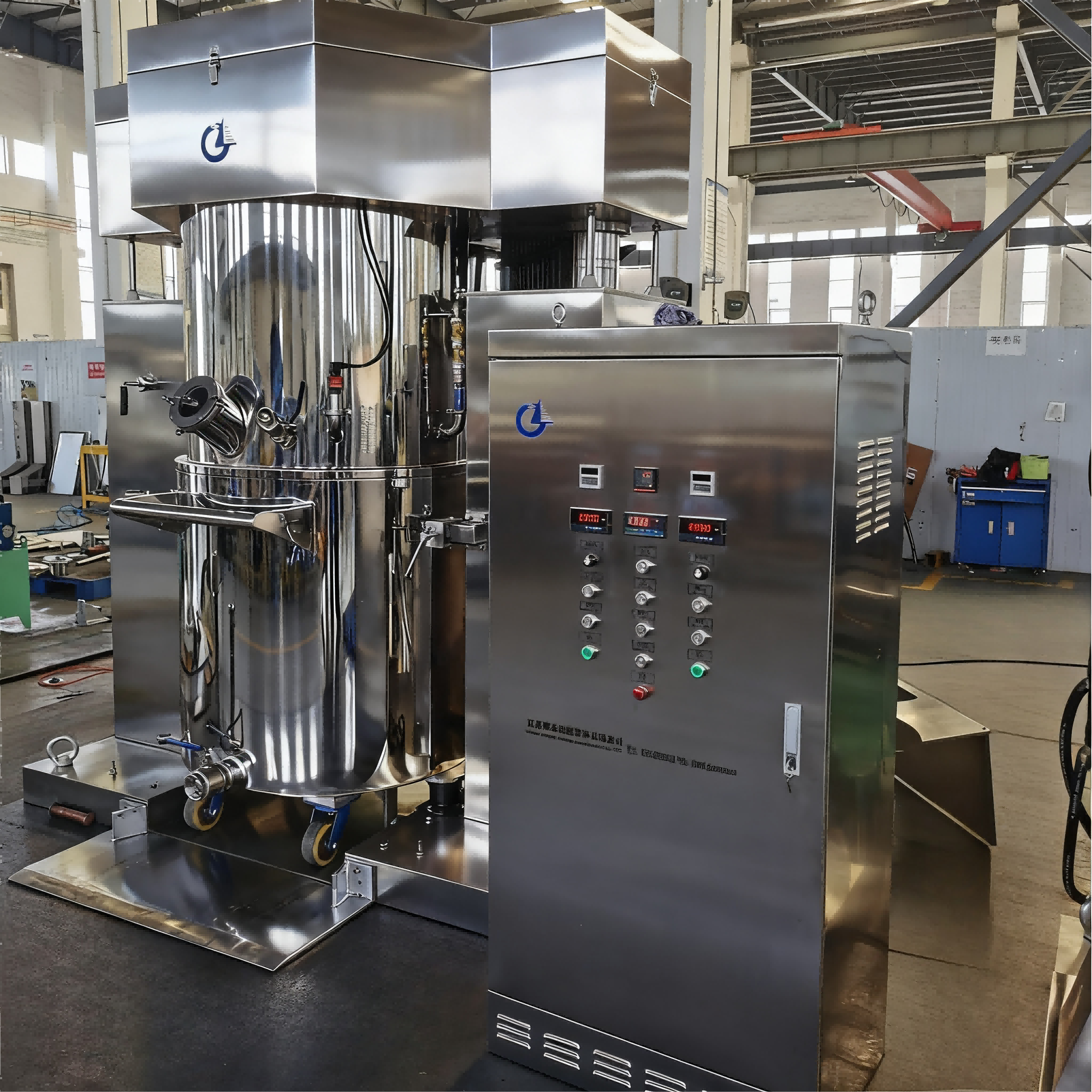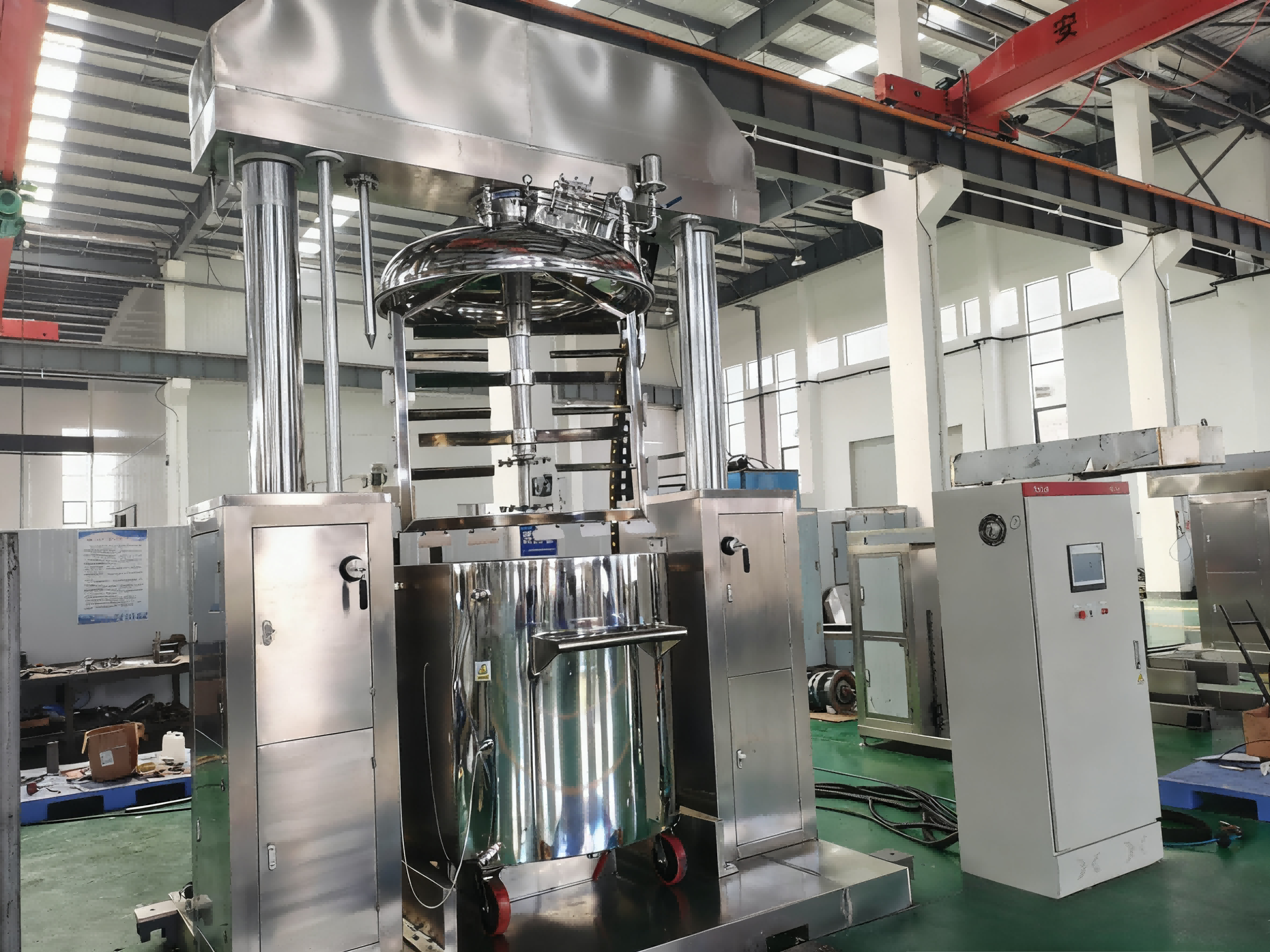Cream Vacuum Emulsifying Homogenizer: Core Features & Advantages
Cream Vacuum Emulsifying Homogenizer: Core Features & Advantages
The cream vacuum emulsifying homogenizer stands as a cornerstone piece of equipment in the cosmetics industry, playing an irreplaceable role in the production of cream-based products. As an advanced cosmetic manufacturing tool, it enables homogenization and emulsification under vacuum conditions—laying the critical foundation for cream products with a finer, smoother texture. Widely adopted across the cosmetics sector, its unique characteristics and competitive advantages are detailed below.
I. Core Characteristics of the Cream Vacuum Emulsifying Homogenizer
1. Vacuum-Controlled Processing Environment
The equipment maintains a sealed vacuum condition throughout the entire cream production process. This design effectively minimizes air entrapment in the product, directly reducing bubble content. The end result is creams with enhanced fineness, a luxuriously smooth texture, and improved surface uniformity—eliminating the "grainy" or "foamy" defects common in traditional atmospheric mixing processes.
2. High-Efficiency Homogenization & Emulsification
Equipped with advanced high-shear homogenization and emulsification technology, the machine breaks down oil-water phases and solid ingredients into ultra-fine particles (often reaching submicron levels). This not only creates highly stable cream formulations (preventing phase separation during shelf life) but also enhances the product’s skin permeability and absorption of active ingredients—directly boosting the end product’s efficacy and user experience.
3. Automated Operation System
The equipment integrates a fully automated control system (typically featuring PLC and touchscreen interfaces). It eliminates human errors caused by manual operation (such as inconsistent mixing speed or temperature fluctuations) while streamlining production workflows. From raw material feeding and temperature regulation to homogenization timing, the entire process is automated—significantly improving both production efficiency and batch-to-batch product consistency.
4. Broad Application Versatility
It exhibits strong adaptability to the production of various cream-based cosmetic products, including facial creams, body lotions, hand creams, and even semi-solid formulations like hair masks or leave-in conditioners. Its flexible parameter adjustment (e.g., adjustable homogenization speed, temperature range) allows it to meet the unique formulation requirements of different products, reducing the need for multiple specialized devices.
II. Competitive Advantages of the Cream Vacuum Emulsifying Homogenizer
1. Elevates End Product Quality
By leveraging vacuum deaeration and precise homogenization, the equipment produces creams with a finer, silkier texture and more stable structure. This not only enhances the product’s sensory appeal (touch, spreadability) but also ensures active ingredients (e.g., vitamins, hyaluronic acid) are evenly dispersed—maximizing their effectiveness and extending the product’s shelf life.
2. Boosts Production Efficiency
The automated operation system reduces reliance on manual labor and shortens processing cycles. Compared to traditional mixers, it cuts down on production time (e.g., emulsification time for a 50L batch of facial cream can be reduced by 20–30%) while minimizing the risk of defective batches caused by human error. This enables manufacturers to meet higher production volumes and faster market delivery timelines.
3. Lowers Overall Production Costs
On one hand, the precise control of mixing and emulsification reduces material waste (e.g., avoiding scrapped batches due to uneven texture or phase separation). On the other hand, the automated system lowers labor costs, and the equipment’s energy-efficient design (a standard feature in modern models) reduces power consumption. These factors collectively drive down the per-unit production cost of cream products.
4. Enhances Workplace Safety
The vacuum-sealed processing environment minimizes the volatilization of volatile organic compounds (VOCs) from raw materials (e.g., certain oils or fragrances). This reduces employees’ exposure to potentially harmful chemical substances, lowering health risks. Additionally, enclosed operation and safety interlocks (e.g., emergency stop buttons, pressure protection mechanisms) further ensure workplace safety during equipment operation.
News
- Latest News
- Solutions
- FAQ
Recommend Products
-
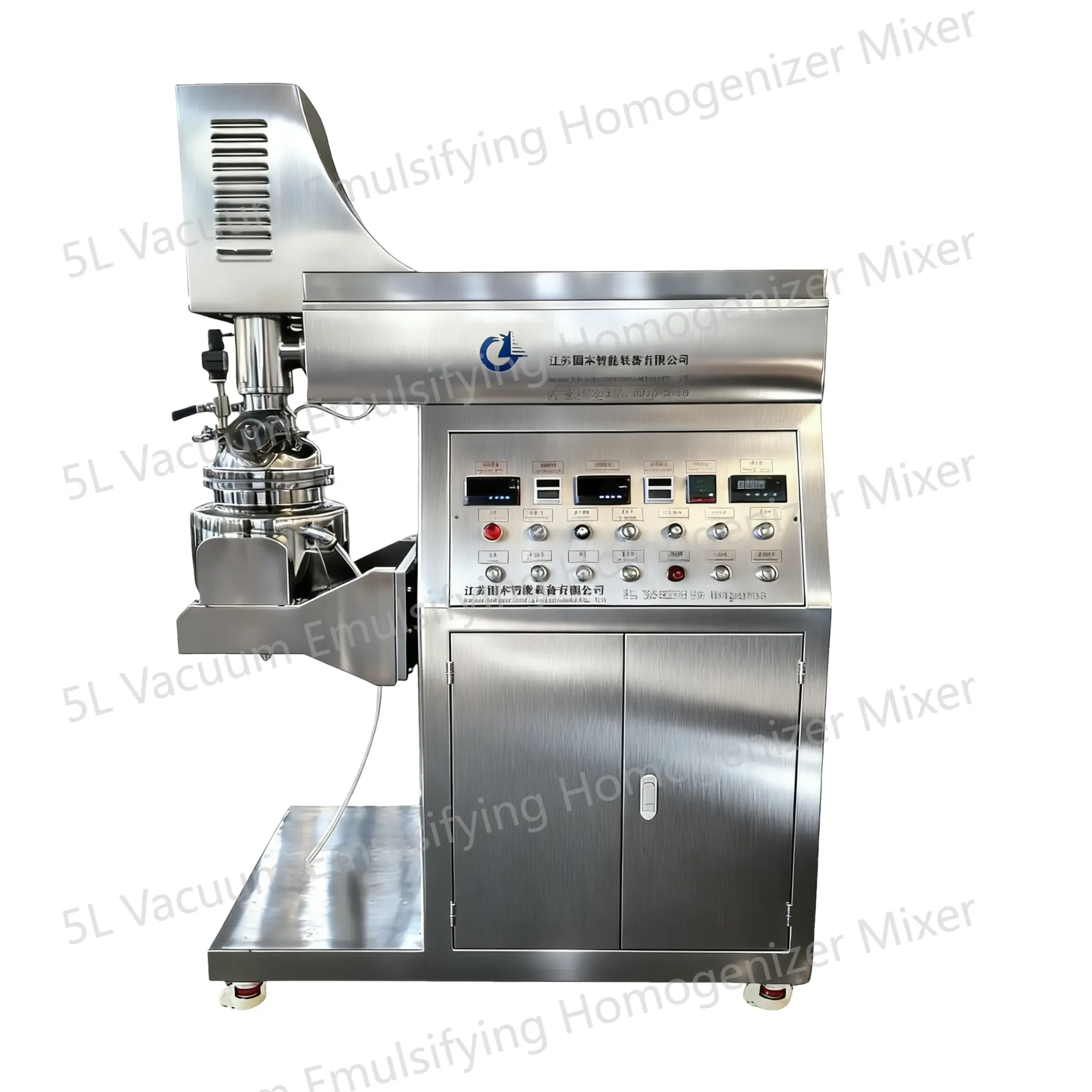 5L Vacuum Emulsifying Homogenizer Mixer
5L Vacuum Emulsifying Homogenizer MixerThe 5L vacuum emulsifying mixer is a device designed for emulsifying and mixing various substances in a vacuum environment. This equipment is equipped with a mixing tank with a capacity of 5 liters and is widely applied in industries such as food, pharmaceuticals, cosmetics, and pesticides.
-
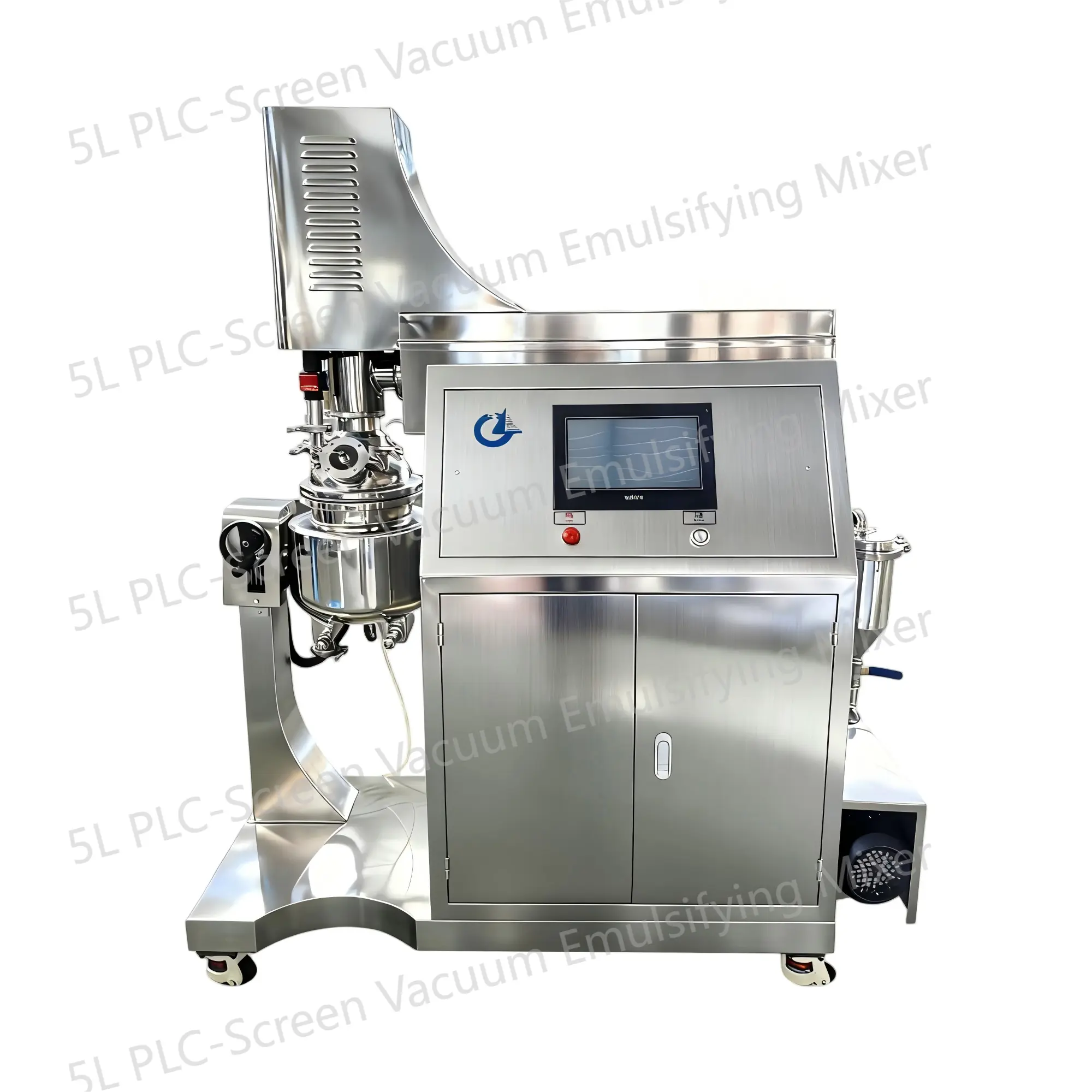 5L PLC-Screen Vacuum Emulsifying Mixer
5L PLC-Screen Vacuum Emulsifying MixerThe 5L PLC-Screen Vacuum Emulsifying Mixer is a device designed for emulsifying and mixing various substances in a vacuum environment. This equipment is equipped with a mixing tank with a capacity of 5 liters and is widely applied in industries such as food, pharmaceuticals, cosmetics, and pesticides.
-
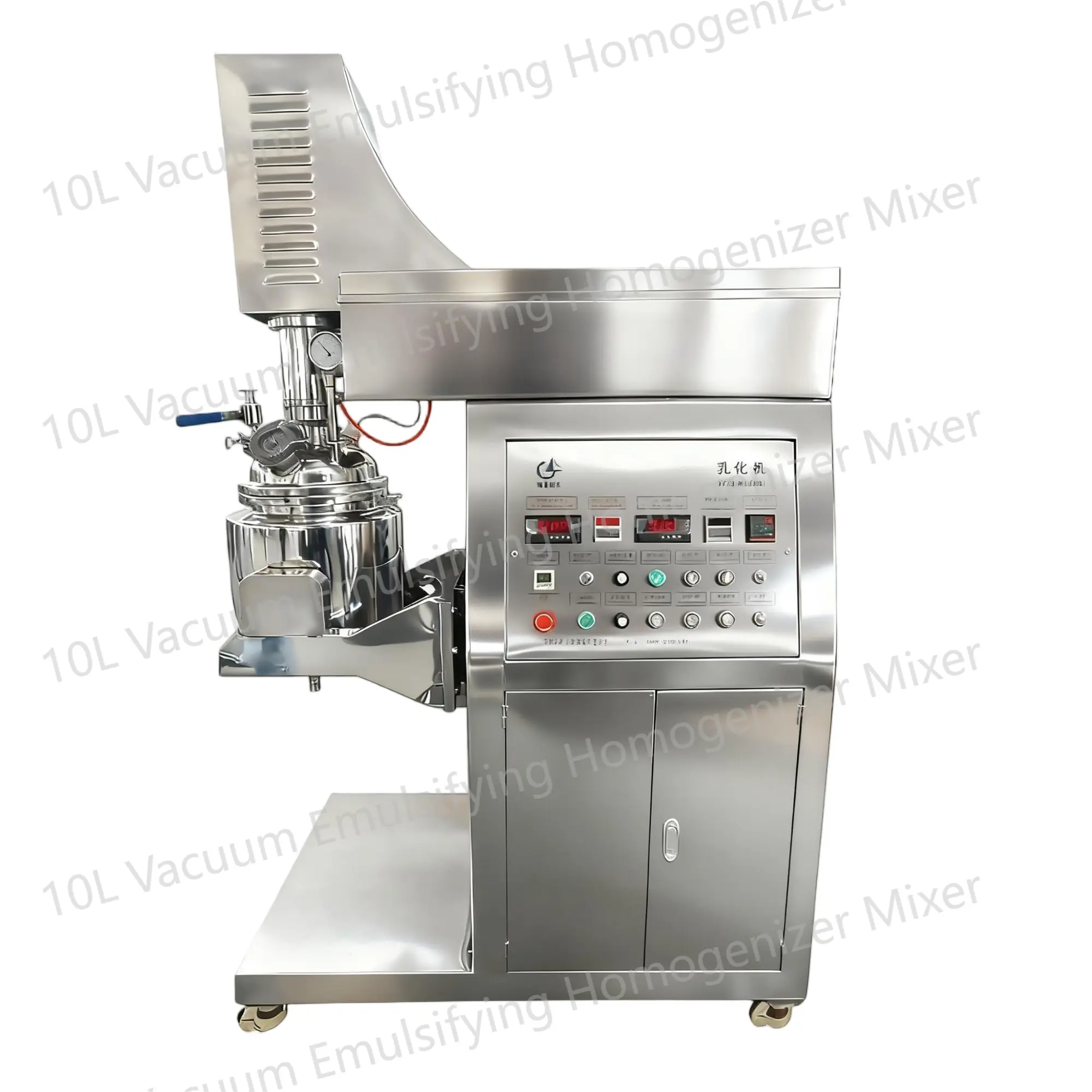 10L Vacuum Emulsifying Homogenizer Mixer
10L Vacuum Emulsifying Homogenizer MixerThe 10L Vacuum Emulsifying Mixer is a device used for emulsifying and mixing various substances in a vacuum environment. It is commonly used in industries such as food, cosmetics, and pharmaceuticals.


 English
English Russian
Russian French
French Spanish
Spanish Portuguese
Portuguese Korean
Korean Japanese
Japanese Thai
Thai